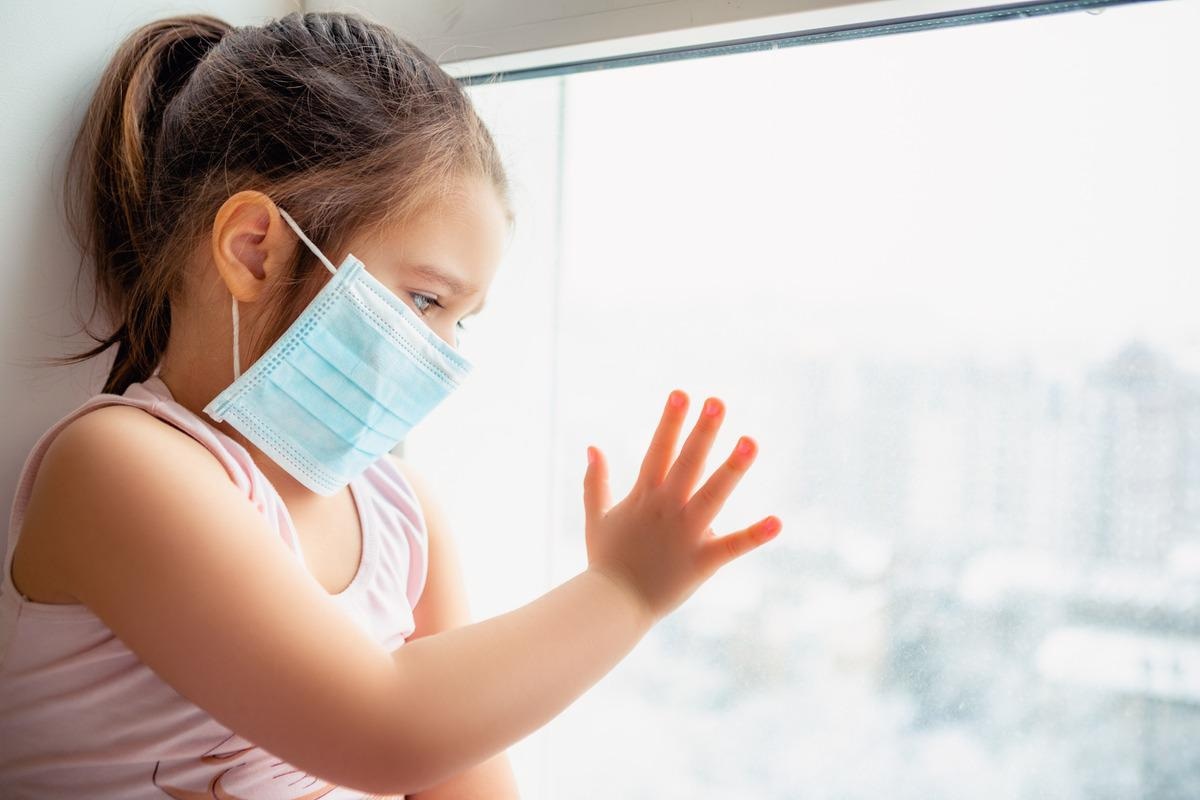In a recent study posted to the medRxiv* preprint server, researchers analyzed the relationship between suspected symptoms of coronavirus disease 2019 (COVID-19) and test positivity in children.
 Study: Correlation of Suspected COVID-19 Symptoms with COVID-19 Positivity in Children. Image Credit: L Julia/Shutterstock
Study: Correlation of Suspected COVID-19 Symptoms with COVID-19 Positivity in Children. Image Credit: L Julia/Shutterstock

 *Important notice: medRxiv publishes preliminary scientific reports that are not peer-reviewed and, therefore, should not be regarded as conclusive, guide clinical practice/health-related behavior, or treated as established information.
*Important notice: medRxiv publishes preliminary scientific reports that are not peer-reviewed and, therefore, should not be regarded as conclusive, guide clinical practice/health-related behavior, or treated as established information.
Background
The COVID-19 pandemic has adversely affected public health and economics. In the United States (US) alone, more than 80 million cases and over 980,435 deaths have been recorded to date. In the early COVID-19 pandemic, adults were at an increased infection rate with more severe outcomes than children. As such, epidemiological data on children are limited, given the initial research efforts to study disease manifestations among adults.
According to a few recent reports, COVID-19 may present differently in the younger population than adults, as noted by the differential timing of symptom onset and severity of the disease. Whereas most pediatric cases are asymptomatic, symptomatic children might exhibit varying severity of symptoms across different organ systems. Moreover, mounting evidence suggests that the multisystem inflammatory syndrome in children (MIS-C) is associated with COVID-19. MIS-C results in adverse systemic inflammation affecting the lungs, heart, kidneys, and gastrointestinal organs. Therefore, it is necessary to understand the epidemiology of symptoms among pediatric cases to guide COVID-19 testing decisions.
About the study
The present study analyzed the prevalence of symptoms among children with COVID-19 concerns presenting to the emergency department (EDs) who subsequently took a COVID-19 test. The authors carried out a retrospective analysis of secondary data of children aged 17 years or lower who presented to ED facilities from March 15, 2020, to May 11, 2020. A polymerase chain reaction (PCR) assay was performed to test for severe acute respiratory syndrome coronavirus-2 (SARS-CoV-2). Testing was performed on any patient who was ordered for testing based on the guidelines set at the time.
Data collected based on electronic medical records (EMRs) were utilized, and the included variables were patient demographics like age, race, sex, insurance and ethnicity, date of visit, vital signs, and associated pediatric ED. A chart review was performed to document the presence/absence of symptoms using notes in the ED for every instance where COVID-19 testing was obtained. Pertinent symptoms reviewed were fever, sore throat, headache, cough, myalgias, shortness of breath, loss of smell/taste, and diarrhea.
A senior investigator reviewed all charts flagged for questions to resolve ambiguities. The prevalence of each symptom was computed by dividing the pediatric ED presentations with that symptom over the total number of ED visits. The rate of prevalence of each symptom was compared between those testing positive for SARS-CoV-2 and negative for COVID-19. Chi-squared tests were performed for categorical variables and Student t-tests for continuous variables.
Findings
The team identified about 516 patient encounters with suspected COVID-19 and they were subsequently tested. Of them, 46 cases were SARS-CoV-2-positive, and the remaining (91.1%) tested negative. A significant proportion (47.8%) of the positive cases were observed in those aged 12 to 17 years. The mean age of those testing positive was 8.76 years in contrast to 6.64 years for those negative for SARS-CoV-2. Intriguingly, although non-Hispanic individuals represented 78.5% of the study population, most positive cases (58.7%) were observed among ethnically Hispanic children. More than half of the positive patients had public health insurance.
Fever and cough were the most common symptoms for cases suspected of COVID-19. Children positive for SARS-CoV-2- had a significantly higher prevalence of myalgias and loss of smell/taste than pediatric cases negative for SARS-CoV-2. The prevalence of other symptoms like cough, sore throat, diarrhea, and shortness of breath was not significantly different between the two sub-cohorts.
Conclusions
In the current retrospective analysis, researchers observed that cough and fever as the most common symptoms among pediatric cases presenting with suspected COVID-19. Among those who test positive for SARS-CoV-2, loss of smell/taste and myalgia were associated with COVID-19 test positivity. Although various studies reported fever and cough as the two predominant COVID-19 symptoms, the authors found no significant association with test positivity, despite many suspected cases presenting with fever/cough in the study cohort.
The study was conducted early in the pandemic when resources for COVID-19 testing were limited, and consequently, prudent allocation and utilization of resources were essential. Given that COVID-19 incidence is increasing among the pediatric population, these findings, which identified symptoms specific for test positivity among children, could help to strengthen SARS-CoV-2 test specificity and aid in the efficient use of resources.

 *Important notice: medRxiv publishes preliminary scientific reports that are not peer-reviewed and, therefore, should not be regarded as conclusive, guide clinical practice/health-related behavior, or treated as established information.
*Important notice: medRxiv publishes preliminary scientific reports that are not peer-reviewed and, therefore, should not be regarded as conclusive, guide clinical practice/health-related behavior, or treated as established information.